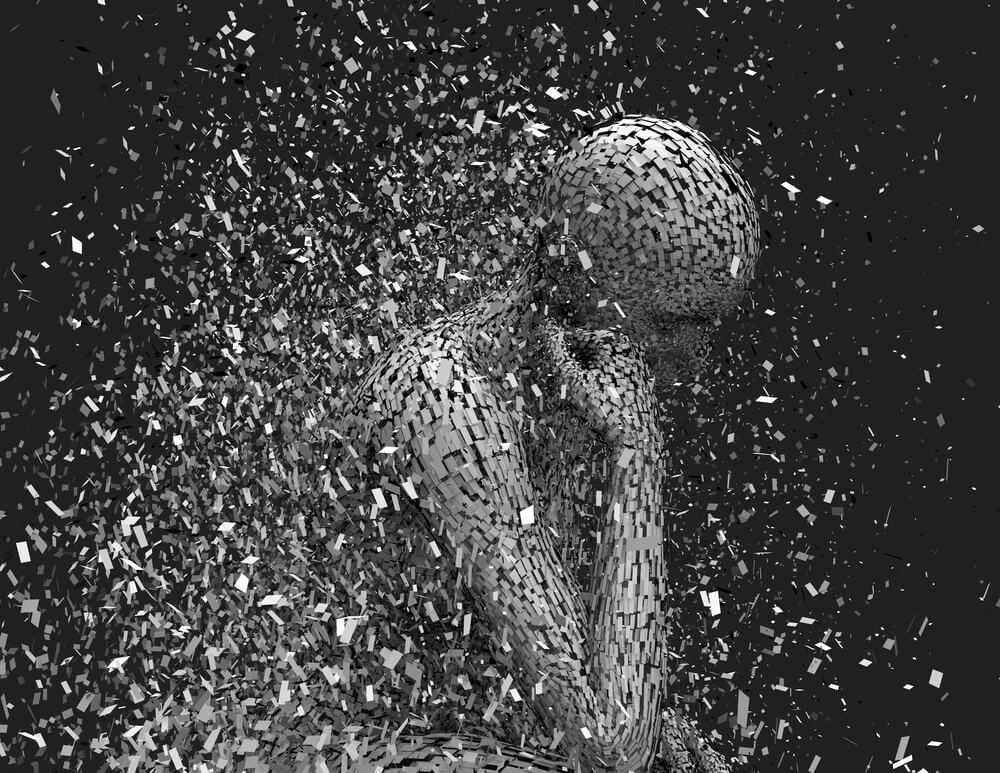Despite its name, atypical depression is a very common disorder and has characteristics similar to major depression.
However, this condition is reinforced by unusual symptoms that, in some situations, allow us to respond positively to our environment, have good appetite, but also cause a feeling of heaviness in the legs and arms.
- This clinical term first appeared in the 1950s.
- It was a coincidence.
- Which many psychiatrists realized when they saw some patients diagnosed with depression not responding to common antidepressants.
They had to analyze these people more closely to find common factors and thus understand what particularity existed in their depressive disorder.
The first thing they noticed was that these patients had pain in their arms and legs, they said they had difficulty moving because their limbs weighed heavily.
Similarly, they also observed that patients had very atypical symptoms associated with major depression, such as hypersomnia and hyperphagia (overeating).
Furthermore, the mood of the analyzed patients deteriorated in the afternoon; however, in the morning, they were able to respond to praise, appreciate visits, and were able to respond positively to certain stimuli.
After collecting data and finding all these points in common, psychiatrists were able to describe this other typology and describe it as “atypical depression”.
As a result, it has become easier to design new drug treatments based on these factors. In addition, many professionals believe that nearly 20% of depressions are actually atypical and therefore require a unique psychological and pharmacological approach.
From a clinical point of view, studies such as those conducted by Jonathan RT Davidson of the University of California indicate that biological or vegetative symptoms arise mainly in atypical depression.
These are people who mainly complain of physical discomfort, tiredness, “not being able to manage their body”. Something like this makes this condition camouflaged in many cases, making it difficult to diagnose.
The patient may think that everything he or she suffers is a consequence of work exhaustion, accumulated fatigue or symptoms associated with poor diet or lack of exercise.
However, the DSM-V has already pointed out in previous editions that atypical depression is persistent; therefore, in the event of not seeking help or not having a correct diagnosis, we can reach very debilitating states.
Let’s see what are the most obvious features of this psychological condition.
One of the characteristics of major depression or even dysthymia is the inability to react to positive situations or stimuli. The person has serious difficulties in feeling joy or well-being.
In the case of atypical depression, the patient experiences small moments of positivity upon receiving a meaningful visit, when someone offers an incentive or praise.
Atypical depression has a high comorability with other disorders, such as anxiety or even bipolar disorder.
This means that among the most common symptoms highlighted by this condition are nervousness, hypersensitivity, the constant feeling that something bad is going to happen, etc.
It also highlights the difficulty of maintaining happy or stable emotional relationships, these patients are characterized by constant distrust, being very sensitive to criticism or the fear of being betrayed or abandoned.
The main paralysis refers to what is mentioned at the beginning: the weight in the limbs, is an intense fatigue that concentrates on the arms and legs to the point that the person feels pain and has many mobility difficulties.
Excess sleep is another obvious factor in atypical depression. The person sleeps excessively, takes long naps, wakes up late and has trouble being productive at work.
Also, the most impressive thing is that no matter how many hours you sleep; fatigue is permanent and you never feel you have regained strength or energy.
Anxiety and nervousness also cause constant hyperphagy, is a hunger that is not relieved and leads to an almost compulsive intake of food.
According to Cristancho, O’Reardon and Thase (2012), atypical depression has a chronic progression, is more common in young women and, in turn, is the most common form of depression in outpatient hospitalizations.
When a person is not being treated and also has comorability with other disorders such as anxiety or bipolar disorder, serious situations or suicide attempts can occur, it is important to keep all of this in mind.
As for strategies to combat atypical depression, it can be said that they will depend on the particular case of each patient.
It is common, for example, for many women to come to the office to complain of eating disorders, such as bulimia, but it can be said that appropriate psychological therapy and drug treatment can greatly improve the patient’s life.
In conclusion, we can mention one more detail. Atypical depression is more common than you think and usually begins early (around age 20).
Early detection allows us to give people the opportunity to have more control over their reality, so they will have the right strategies to give themselves the opportunity to be happy, to move forward more safely.

